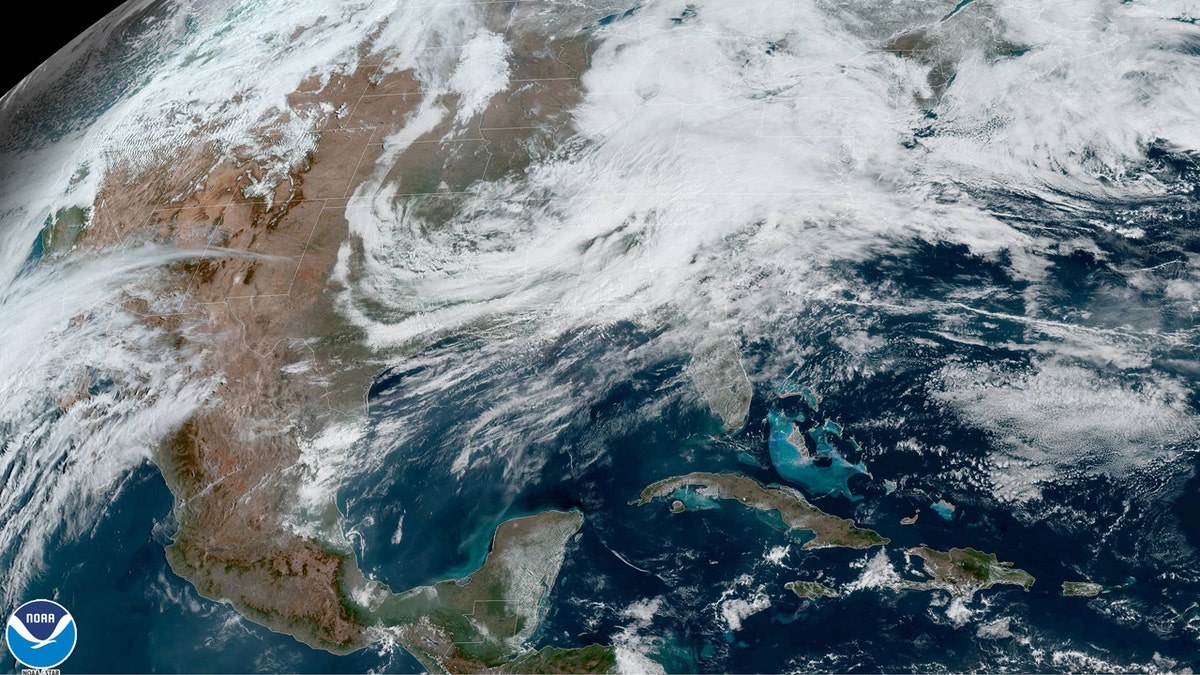Will the coronavirus die out as the weather warms?
Some experts aren’t sure if the coronavirus will die out as the weather warms. According to Dr. William Schaffner it may just be too soon to tell.
Get all the latest news on coronavirus and more delivered daily to your inbox. Sign up here.
The coronavirus pandemic that's caused a freefall in air travel and spurred airlines to ground planes may end up making weather forecasts less accurate.
The European Center for Medium-Range Weather Forecasting said last Tuesday that another consequence of the COVID-19 spread around the world is the reduction in aircraft flights and the observations from those planes that are used for weather prediction centers.
"At ECMWF, aircraft reports are second only to satellite data in their impact on forecasts," the ECMWF said. "However, recently added satellite wind observations will help to mitigate the drop in the number of aircraft-based observations."
CORONAVIRUS AND TORNADO SHELTERS: HERE'S WHAT FORECASTERS SAY YOU SHOULD DO DURING A WARNING
One of the main sources of aircraft-based weather observations to use in forecasts is the Aircraft Meteorological Data Relay Program (AMDAR) by the World Meteorological Organization.

Tail fins of passenger planes, mostly Delta Air Lines planes, sit parked at Pinal Airpark Wednesday, March 18, 2020, in Red Rock, Ariz.. (AP Photo/Ross D. Franklin)
The AMDAR system uses sensors and communications systems from existing aircraft carrying travelers to collect, format and transmit meteorological data from forecast winds at cruising altitudes. The information arrives at ground stations by either satellite or radio links.
But as coronavirus spread through Europe and travel restrictions were enacted, the amount of data from aircraft being used to go into weather models plummeted.
“The latest information available from airlines suggests that European AMDAR coverage will be reduced by 65 percent or more over the coming month, which is currently expected to continue into the summer,” said Steve Stringer, the aircraft-based observations program manager for EUMETNET.
CLICK HERE FOR FULL CORONAVIRUS COVERAGE
The ECMWF is an independent intergovernmental agency supported by 34 members in Europe that operate the world's most accurate weather model, known as the Euro model.
The European center noted that between March 3 and 23, aircraft-generated weather reports across Europe dropped by 65 percent, while there was also a 42 percent drop globally.

Imagery showing the density in aircraft at different altitudes in Europe on March 2, 2020. Red indicates low altitudes. (Stewart Taylor/EUMETNET)
The ECMWF notes that many aircraft reports are provided by airlines in the U.S., because of the "particularly dense coverage" of aircraft in the skies of America.

Imagery showing the density in aircraft at different altitudes in Europe on March 23, 2020. Red indicates low altitudes. A noted reduction in flights can be seen over Italy. (Stewart Taylor/EUMETNET)
As major carriers have cut flights in the U.S., American forecast counterparts such as the National Oceanic and Atmospheric Administration, which runs the U.S. forecast model known as the GFS, are anticipating an impact.
“We are anticipating the substantial reduction in the availability of US AMDAR data to continue over the coming weeks, likely to generate some measure of impact on the output of our numerical weather prediction systems,” NOAA's Christopher Hill said in an ECMWF news release.
WILL THE CORONAVIRUS DIE OUT AS THE WEATHER WARMS?
Susan Buchanan, a spokesperson for the National Weather Service, told the Washington Post that more than 3,500 commercial aircraft provide the agency more than 250 million observations per year. She added that forecasters look at multiple forecast models when preparing their forecasts.

In the U.S., the National Weather Service said that than 3,500 commercial aircraft provide the agency more than 250 million observations per year. (NASA/GOES East)
“It’s too soon to quantify the exact impact because the decrease is only occurring for certain flights and routes, and while there is a reduction of commercial passenger flights, we still receive valuable aircraft data from overnight cargo and package carriers,” Buchanan said in a statement to the paper.
CLICK HERE FOR THE FOX NEWS APP
Forecasters in Europe noted that a small proportion of aircraft reports come from cargo flights, which are less affected by COVID-19 than passenger flights.
While satellite data provides data on temperature and humidity, it does give less information on wind fields that are used for meteorologists to forecast severe weather events, in addition to hurricanes and typhoons.
The ECMWF noted that to mitigate the impact of the loss of airplane data, meteorologists may turn to more radiosonde (balloon) launches to get a more accurate reading on wind speeds.
As of Tuesday, there are at least 164,785 positive cases of COVID-19 and at least 3,173 deaths in the U.S., according to a tally by Johns Hopkins University. Some 5,945 people have recovered from the virus nationwide. The death toll from the virus in the U.S. is set to overtake the reported number out of China, figures that have been disputed by locals.


